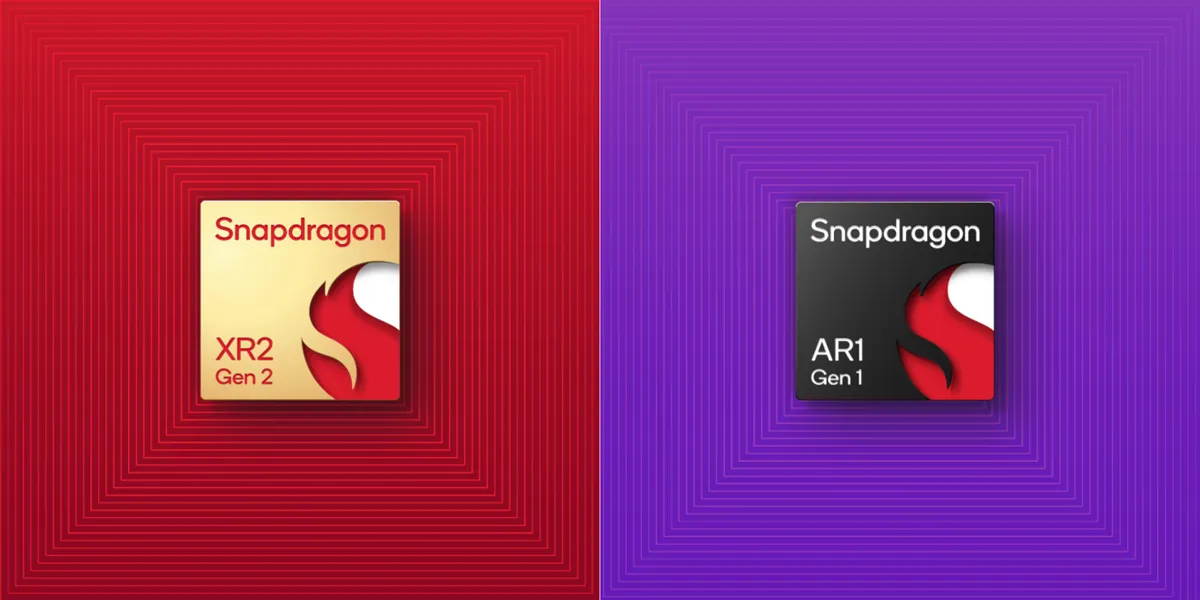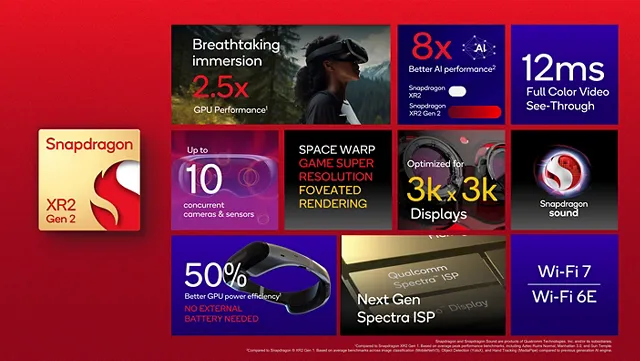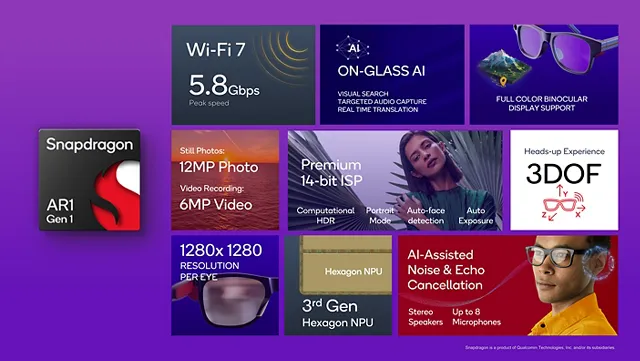
Qualcomm unveils next-gen chips for XR and AR platforms

Qualcomm launched new chips for XR and AR platforms: Snapdragon XR2 Gen 2 for VR and mixed-reality devices and AR1 Gen 1 for smart glasses. Meta developed these next-generation platforms in close collaboration with Qualcomm and will commercially launch them on Meta devices in 2023.
Andrew “Boz” Bosworth, Meta’s CTO and Head of Reality Labs, said in a statement:
“At Meta, we’re focused on developing the technologies of the future in mixed reality and smart glasses, as well as the foundational innovations that will one day power our vision for AR glasses. Building this future computing platform requires an industry-leading partner and this is where our long-standing collaboration with Qualcomm Technologies is critical. Together, we are defining next-generation technologies that deliver massive breakthroughs in power, performance, and AI.”
Snapdragon XR2 Gen 2 Platform
Technology and affordability both supported Qualcomm’s XR development. In addition, they focus on balancing power, latency, size, and display quality for headsets. The XR2 Gen 2 provides a 2.5x GPU performance boost and 8x AI performance improvement, with energy efficiency. It optimizes the powering of two 3k displays and handles input from up to 10 cameras and sensors. Furthermore, they plan for affordable devices that don’t exceed around 20 watts, making XR accessible to a broader audience.
This strategy differs from Apple’s pricier Vision Pro, aligning with Qualcomm’s goal of making XR experiences affordable for more people. Moreover, Qualcomm’s XR chips power approximately 80 devices, spanning from VR to mixed reality. They are famous in consumer areas like gaming, fitness, and entertainment.

Source: Qualcomm
Snapdragon AR1 Gen 1 Platform
Qualcomm’s AR1 Gen 1 chip is created for standalone smart glasses akin to Google Glass, while the AR2 Gen 1 is intended for immersive AR glasses like HoloLens. The AR1 Gen 1 plans to revitalize the smart glasses market with advanced image processing and “on-glass” AI for voice commands and noise cancellation. It will support displays with 1280 x 1280 resolution per eye and three degrees of freedom.
Ray-Ban’s new Stories smart glasses will use Qualcomm’s AR1 Gen 1 platform, although they won’t include a display, even though the AR1 Gen 1 can support it. The AR1 Gen 1 platform enables users to capture, share, or live-stream hands-free directly from the glasses. On-device AI improves user experiences with features like audio quality improvement, visual search, and real-time translation. Moreover, the platform supports a visual heads-up display for seamless content consumption within the user’s field of view, including video.
Bosworth continued his statement:
“The latest Snapdragon XR2 Gen 2 and Snapdragon AR1 Platforms, which power Meta Quest 3 and our next-generation Ray-Ban Meta smart glasses, are another testament to the strength of this collaboration and we are thrilled for users around the world to experience them.”

Source: Qualcomm













